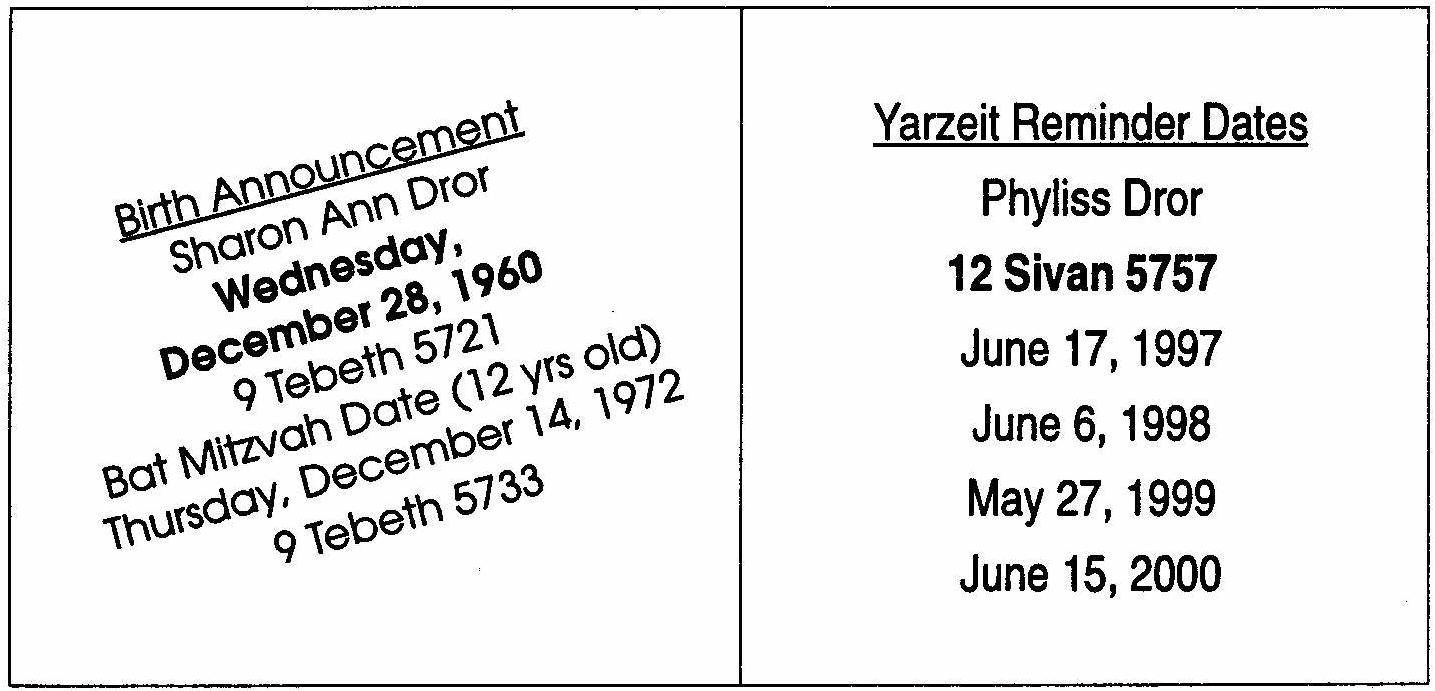
Ever noticed that when it comes to important Jewish dates such as holidays, celebrations, anniversaries or deaths, the date does not remain the same each year?
Many different calendars are used around the world and some religions have their own calendars. The American calendar, which has been around since the Roman Empire, is based on the sun’s solar cycle i.e. 364 1/4 days to make one revolution around the sun with one additional day added every four years to make up for that 1/4th day.
The Muslim calendar is set according to the moon’s cycle which is eleven days shorter than the solar cycle. As for the Jewish calendar, the Torah states when specific holidays must take place i.e. Passover must be in the spring as Succos is the holiday of the harvest; the ingathering of the summer fruits. The Jewish year deals with both the solar and lunar calendar. In order for the holidays to come out in their proper time, we have a leap year which means that we add a whole extra month. There are seven leap years in a 1 9-year lunar cycle so a leap year can be every two or three years depending on the year of the cycle.
For a person living outside Israel or not part of a religious Jewish community, the Jewish calendar can appear to be confusing. Religious Jews follow the religious calendar for all holidays and family events.
Jewish Dates
The Jewish date does not correspond to the civil calendar at all. For example Passover is always on the 1 4th day of Nissan which may, if you look at the civil calendar, be during either March or April. During a Jewish leap year, the month of AdarII is added to ensure that Passover takes place in the spring as required by the Torah.
A Jewish calendar shows the Jewish month, the Jewish year and also the times of candle lighting for the Sabbath and other Jewish holidays.
Birth Date
The Hebrew birthdate is determined by which day and what time the person was born on. If the person is born during the day, his or her birthday is on that same day. However if the person is born after sunset, he or she is considered to have been born the next day since a Jewish day begins at nightfall not at midnight. The Sabbath starts at 18 minutes before sunset and goes for 25 hours.
Bar/Bat Mitzvah
The date of a person’s bar/bat mitzvah is also determined by the portion of the week and the Hebrew date of the person’s birthdate that was read when the person was born.
Generally we follow our birth date according to the civil calendar but follow the Hebrew calendar when it comes to a bar/bat mitzvah since it is celebrated on the Sabbath following the 12th (female) or 13th (male)’s birthday.
Yarzeit
The children of a deceased parent observes the anniversary of their parent’s death according to the Hebrew date. For that reason you may notice on some tombstones, it lists both the civil date of the person’s death along with the Hebrew date. Usually a representative of the funeral home or synagogue would give you a list of the Hebrew date of that person’s death for the next several years to help you observe the anniversary on the correct date which is the Hebrew date.
Months
The months of the year are as follows: Nissan, Iyar, Sivan, Tammuz, Av, Elul, Tishrei, Cheshvan, Kislev, Teves, Shevat, Adar.
Rosh Hashana, the Jewish New Year according to the Torah is on the first day of the seventh month.
Finding Out The Hebrew Date
You can also find the Hebrew date yourself. A book called ‘Comprehensive Hebrew Calendar’ by Arthur Spier, usually available at your local Jewish bookstore, can show the correct dates from 1900 through to the year 2100 (5660 to 5860 on the Jewish calendar).
PLEASE AVOID PLANNING YOUR EVENTS ON THESE SHADED DATES!






